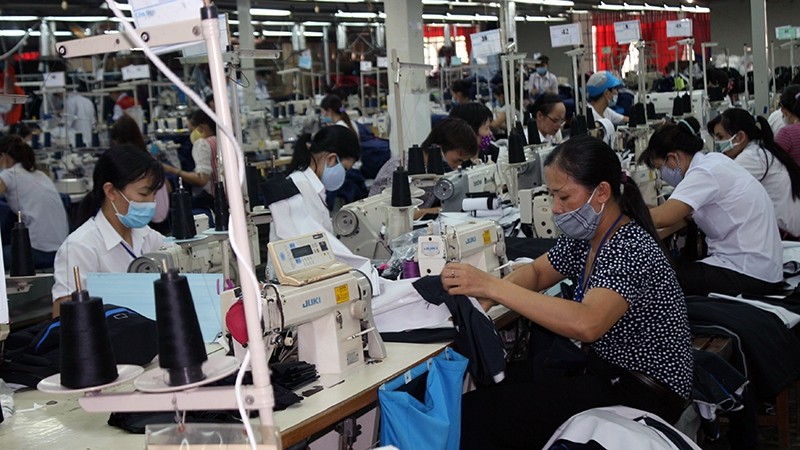Experts forecast that, with global consumption picking up, Vietnam’s garment export revenue is highly likely to reach 48 billion USD this year, an increase of nearly 6 billion USD compared to the target.
Currently, the majority of garment makers already have orders until September, with many even having orders until December.
According to Chairman of Hung Yen Garment Corporation (Haguco) Nguyen Xuan Duong, the company faced a great deal of difficulties in February and March due to the negative impacts of COVID-19, resulting in worker shortages, disrupted supply chains of raw materials, and rising transport costs. But Haguco managed to maintain its business and reported growth in both revenue and profit.
The company has received orders for delivery until September and is negotiating with its partners to ensure that there will be jobs until the end of the year.
Hugaco General Director Pham Thi Phuong Hoa said the company aims to reach 750 billion VND (32.6 million USD) in revenue and earn 80 billion VND (3.5 million USD) in pre-tax profit in 2022. If such goals are to be reached, the company needs to continue investing in expanding production and renovating technology to boost exports.
For Garment Corporation 10, besides orders for seasonal products, orders for traditional products such as jackets and dress shirts are rebounding. In order to meet the revenue goal of 3,800 billion VND (165.3 million USD) for 2020, the company is also pouring investment into enhancing its capacity and competitiveness.
According to the Vietnam Textile and Apparel Association (Vitas), the sector’s total export revenue reached over 10.6 billion USD in the first quarter of 2022, up nearly 20% over the same period last year. It was an impressive growth rate, and the full-year revenue is likely to hit 48 billion USD.
However, if Vietnamese garment makers want to capitalise on export opportunities, they need to be able to secure materials proactively and meet the requirements of new-generation free trade agreements. Recently, the European Commission proposed some new ecological regulations on garment products sold in the market, under which such products must have a long lifetime and be reusable and repairable.
Besides Europe, sustainability is becoming a global trend in which countries are working towards safe energy-saving and water-saving products that are made with less chemicals that harm the environment. Therefore, Vietnam’s garment sector should foresee the trend and adapt in a timely manner to meet the new ecological requirements in demanding markets.
Vitas Vice Chairman Truong Van Cam said that rising global consumption and the large number of orders in recent time are favourable conditions for Vietnamese garment makers to step up production and export activities. If enterprises want to be sustainable, they need to have a new vision and aspiration to assert themselves. Vietnam’s garment sector should look to compete not with cheap labour but with quality, technology, productivity, delivery time, transparency, energy efficiency, and environmental protection.
















